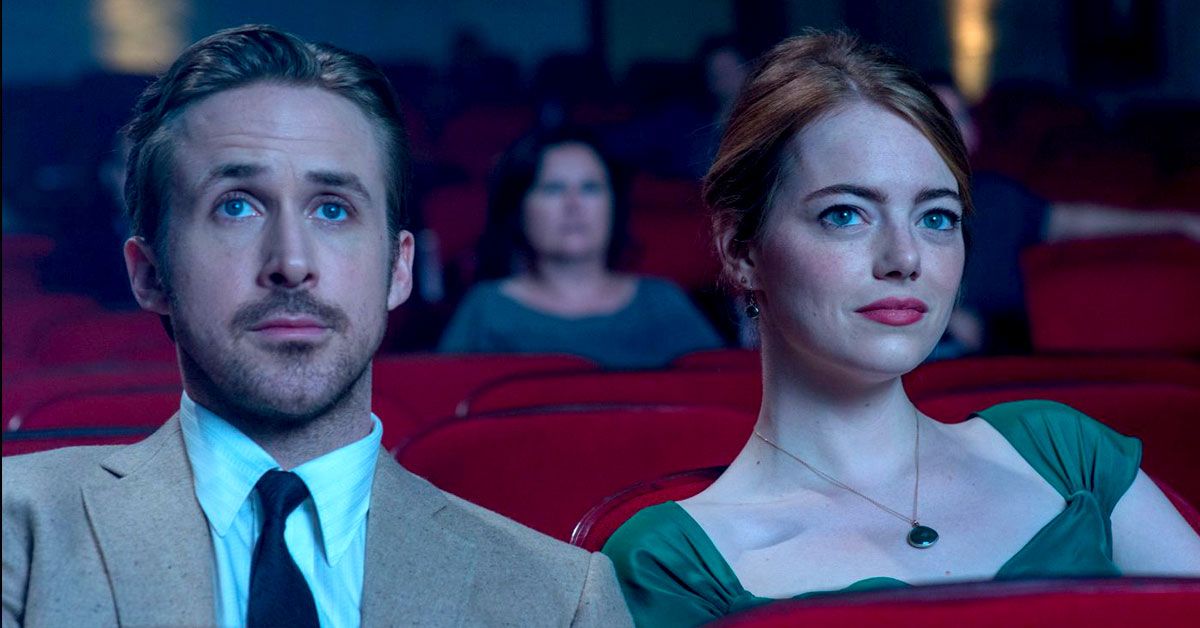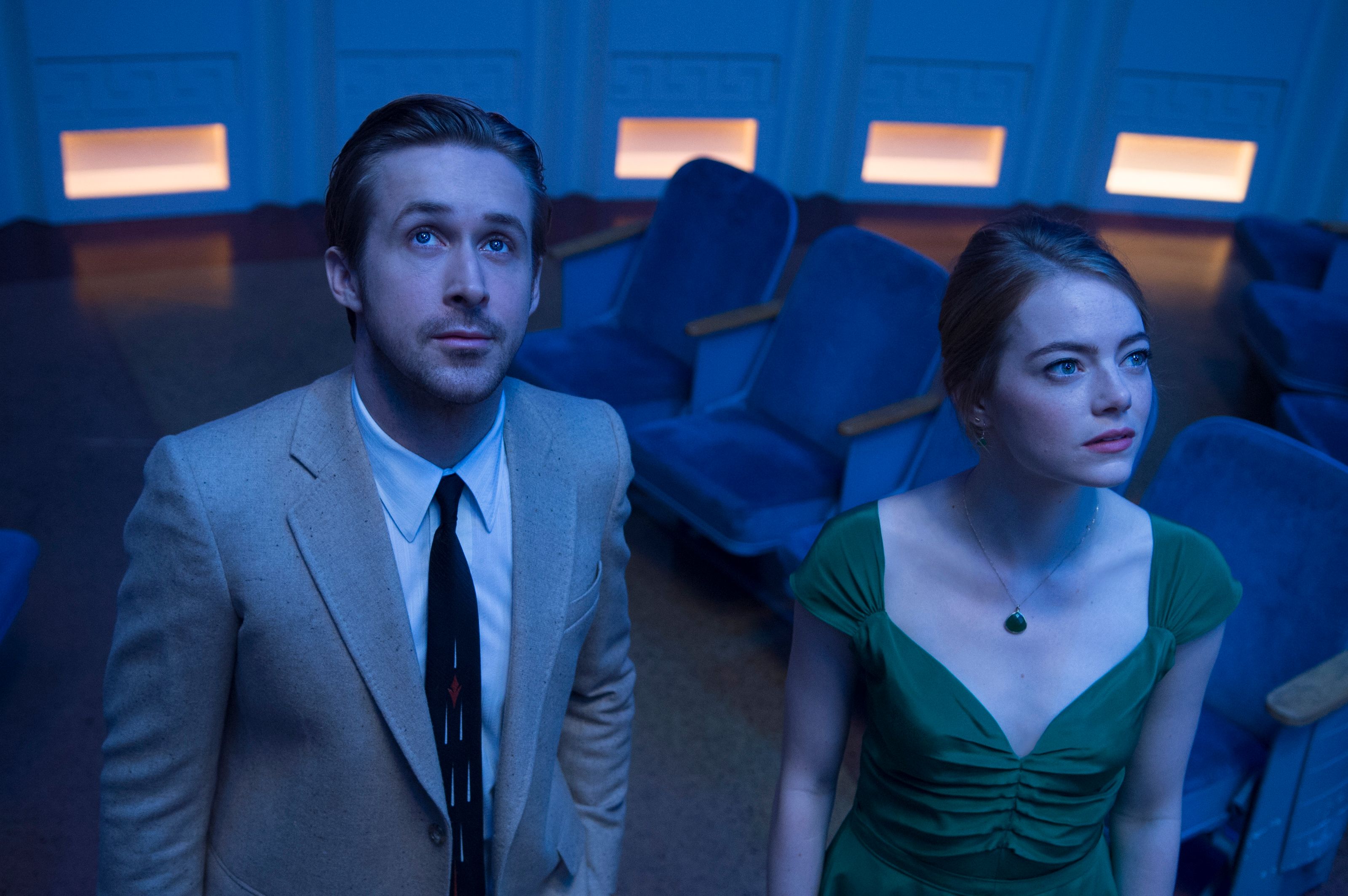La La Land dazzled its audience members through its music, choreography and performances by Ryan Gosling and Emma Stone. With the help of composer Justin Hurwitz, lyricists Benj Pasek and Justin Paul, choregrapher Mandy Moore, and a talented production team, the film is filled with eye-popping and vibrant musical numbers. From the opening on the freeway where dancers pop out of their cars to the musical sequence of Gosling and Stone lifted into the skies of the Griffith Observatory, the film captures a wonderful tribute to classic Hollywood musicals. It also served as a love letter to aspiring musicians and actors who have big dreams to make it in Hollywood.
Damien Chazelle's first wave of inspiration was when he first saw Jacques Demy's Umbrellas of Cherbourg. He said, "I had never seen a musical like that, a musical that was just as kind of high-flying as the sort of MGM style that it was borrowing from, but dealing with both the highs and lows, so to speak, trying to actually kind of reflect a somewhat more realistic version of life and how things don’t always work out in life. There’s something just so beautiful and poetic about it, and it’s still probably my favorite movie ever. So I feel like La La Land kind of started there.” The film is filled with visual allusions ranging from The Big Broadcast of 1940 to Singin' in the Rain and The Band Wagon.
The story is also about his own experiences moving from the East Coast and his preconceived ideas on what Los Angeles would be like. In an interview with Deadline, Chazelle said, "The whole thing was kind of imagining L.A. in your head, which is mainly how you have seen it in movies, and then coming to L.A. and the ways it lives up to those stereotypes, the ways in which it doesn’t, the ways in which it surprises you. It’s a very strange, oddball city that I think is just kind of fascinating. It’s almost the embodiment of the romantic idea of America, you know, the freeways that go on to infinity, the big horizon, the big sky, the beach, Hollywood, you know the whole thing is so larger than life and so kind of iconic America in their mind."
At the Griffith Observatory, Chazelle captured the building and the city in the mind of a painter. He said, “This was part of an overall scheme with the movie. Which was, as much as possible, use real L.A., do things in-camera without digital effects, but try to find those moments where real life looks as fake as possible.” Chazelle and the crew waited to get the evening sky they wanted. The cinematographer Linus Sandgren used a whitish-green light to bathe Mia and Sebastian in color while casting shadows on them.
Stone was drawn to the film by its optimism and hopefulness. She said, "It’s about dreaming and hoping and working towards something to achieve something. And I think young people have fallen into a lot of cynicism and making fun of things and pointing out the flaws in everything. And this movie is anything but that, and it’s a huge joy to be a part of it.”
The film doesn't just tell a love story between Mia and Sebastian, it's about the struggles that young musicians and actors face when they first start out. Whether it's battling their own insecurities, dealing with the fear of failure and figuring out what they want to do with their life, Mia and Sebastian go through their own journey to follow their own dreams. Sebastian, a musician wants to save jazz because it's a dying genre, while Mia is an aspiring actress aching to get a big break.
In the dinner scene, Mia isn't afraid to call Sebastian out for selling himself out. Mia questions if Sebastian even enjoys performing the band's music, and Sebastian retorts back on why it matters. Mia thinks if Sebastian is throwing away his dream of opening a jazz club, he should at least enjoy the music he's performing. Sebastian believes having a steady job where he gets paid will eventually lead him to starting a club. People much like Sebastian, start out in Hollywood end up taking jobs they're not passionate about to save up money to invest in themselves along the road.
Towards the end of the film, Sebastian drives all the way out to Boulder City to tell Mia that she got invited to an audition. Mia breaks down crying and believes she's not good enough because of her failed auditions. She tells Sebastian that it's a pipe dream, she believes her dreams have changed because it hurts her too much. She even suggests that she can go back to school. Sebastian manages to convince her to go back to Los Angeles for the audition. Actors in Mia's position often feel like a failure after getting rejected by casting directors, they feel insecure and give up when things get tough. But in order to succeed, they must learn to overcome their fear of failure or rejection.
Five years later in the film, Sebastian finally opens up his jazz club while Mia becomes a famous actress. They meet again in his club and a dream sequence "Epilogue", ensues where the two imagine what things might had been like had their relationship continued alongside their career. It's a bittersweet ending, that is not told very often in cinema. The film is about two highly ambitious people who identify strongly to their dreams, who weren't afraid to be vulnerable and help each other in their journeys. Whether it's the performances or production design that captivates audiences, it's certain to connect with young creative people all over the world.



